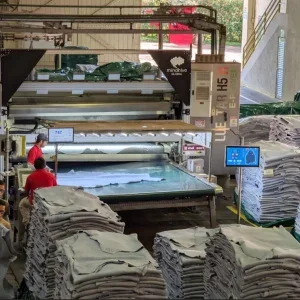While Vietnam‘s textile and garment exports in the first eight months of 2022 totaled US$30.1 billion, the bull of the income was from the early months. Since July, export orders have been on the decline.
Inflation and flagging demand in key markets have affected the country’s leather and footwear exports, says the Vietnam Leather, Footwear and Handbag Association (LEFASO). According to the the Vietnamese News Service, export orders have dropped and are expected to remain low until the start of 2023. At the same time, companies all along the supply chain have an excess of inventory because of low demand.
LEFASO says that footwear manufacturers have cut overtime and renegotiated orders to keep plants running.
At the same time, the sector – along with the textile-garment industry – have been advised to improve production sustainability if they want to continue exporting to the EU. LEFASO’s Secretary General said that the country’s manufacturers have to upgrade the quality of human resources and production and implement clean energy and green technology practices.
Europe is a critical market for the country’s leather and footwear industries, so meeting the region’s tighter environmental standards is key for maintaining and growing exports.






